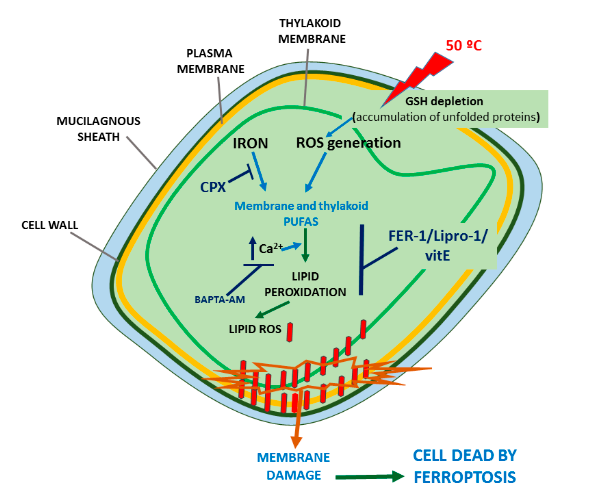Journal of cell biology, J Cell Biol (2022) 221 (2): e201911005., 2022
Abstract:
Ferroptosis is an oxidative and iron-dependent form of regulated cell death (RCD) recently described in eukaryotic organisms like animals, plants, and parasites. Here, we report that a similar process takes place in the photosynthetic prokaryote Synechocystis sp. PCC 6803 in response to heat stress. After a heat shock, Synechocystis sp. PCC 6803 cells undergo a cell death pathway that can be suppressed by the canonical ferroptosis inhibitors, CPX, vitamin E, Fer-1, liproxstatin-1, glutathione (GSH), or ascorbic acid (AsA). Moreover, as described for eukaryotic ferroptosis, this pathway is characterized by an early depletion of the antioxidants GSH and AsA, and by lipid peroxidation. These results indicate that all of the hallmarks described for eukaryotic ferroptosis are conserved in photosynthetic prokaryotes and suggest that ferroptosis might be an ancient cell death program.
Subjects:
Cell death and autophagy, Microbiology
C-Ferroptosis
